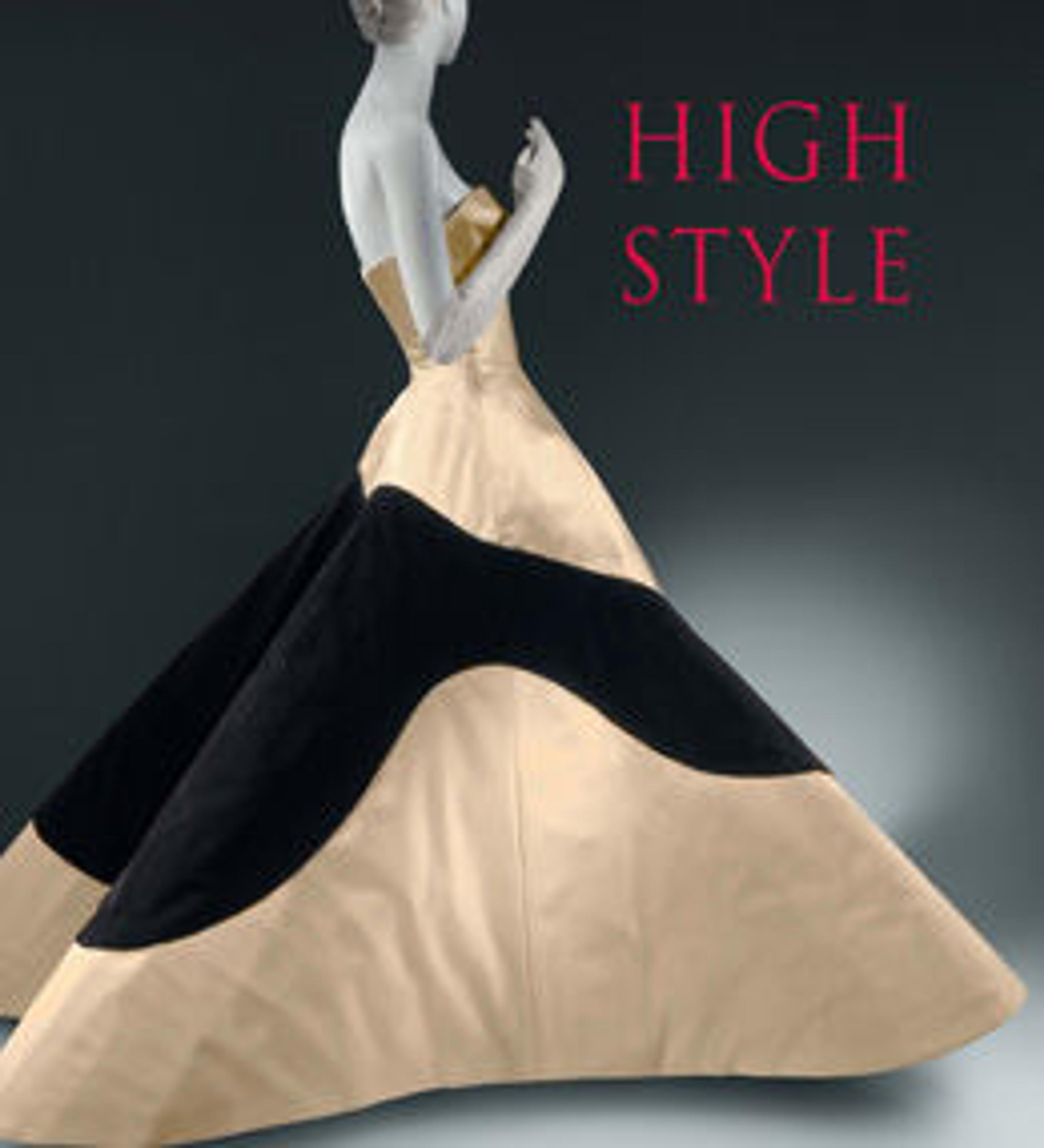Evening boots
Beth Levine's ingenious and witty designs, experimentation with novel materials, and ability to invent practical solutions have earned her the place of top female shoe designer of the 20th century. Levine was particularly adept at predicting future trends and devising structural innovations. Chief among her achievements were the popularization of the fashion boot in the 1960s, the use of vinyl and spandex, and the inventions of the Spring-o-lator mule, the stocking shoe, and the topless shoe. These boundary-breaking innovations earned Levine a Coty award 1967.
Levine resurrected the high-fashion boots with designs like this in the early 1960s. Note that the basic form emulates the stiletto pump, the standard style of the time, rather than the more youthful go-go, Courrèges and Beatle boots that would follow a few years later. The taste for heavy metallic fabric and beadwork emulates couture fashion, where stiff, conical dresses were typically encrusted with beadwork around the neckline, sleeves, or hem.
Levine resurrected the high-fashion boots with designs like this in the early 1960s. Note that the basic form emulates the stiletto pump, the standard style of the time, rather than the more youthful go-go, Courrèges and Beatle boots that would follow a few years later. The taste for heavy metallic fabric and beadwork emulates couture fashion, where stiff, conical dresses were typically encrusted with beadwork around the neckline, sleeves, or hem.
Artwork Details
- Title: Evening boots
- Designer: Beth Levine (American, Patchogue, New York 1914–2006 New York)
- Manufacturer: Herbert Levine Inc. (American, founded 1949)
- Date: ca. 1962
- Culture: American
- Medium: silk, metal, rhinestones
- Credit Line: Brooklyn Museum Costume Collection at The Metropolitan Museum of Art, Gift of the Brooklyn Museum, 2009; Gift of Lady Emilia Dreher Armstrong, 1989
- Object Number: 2009.300.2230a, b
- Curatorial Department: The Costume Institute
More Artwork
Research Resources
The Met provides unparalleled resources for research and welcomes an international community of students and scholars. The Met's Open Access API is where creators and researchers can connect to the The Met collection. Open Access data and public domain images are available for unrestricted commercial and noncommercial use without permission or fee.
To request images under copyright and other restrictions, please use this Image Request form.
Feedback
We continue to research and examine historical and cultural context for objects in The Met collection. If you have comments or questions about this object record, please contact us using the form below. The Museum looks forward to receiving your comments.
